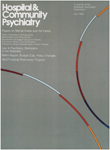Recent Developments in Family Therapy: A Review
Abstract
Since its beginning some 25 years ago, family therapy has become a widely used modality. The field is developing its own theoretical foundations, training institutions, and body of outcome research; the authors review some of the changes, especially those of the last two or three years. One major development is the growing differentiation of family therapy models and techniques; related are increasing attempts to delineate selection criteria and to provide empirical data for special matches of problems and treatments. The field has moved from its early preoccupation with schizophrenia to concern with new target populations, such as families disrupted by divorce. Family therapy is also being used more often in the treatment of hospitalized patients and of substance abusers. The outcome research is growing in extent and sophistication; the positive results indicate a continuing prominent role for this modality.
Access content
To read the fulltext, please use one of the options below to sign in or purchase access.- Personal login
- Institutional Login
- Sign in via OpenAthens
- Register for access
-
Please login/register if you wish to pair your device and check access availability.
Not a subscriber?
PsychiatryOnline subscription options offer access to the DSM-5 library, books, journals, CME, and patient resources. This all-in-one virtual library provides psychiatrists and mental health professionals with key resources for diagnosis, treatment, research, and professional development.
Need more help? PsychiatryOnline Customer Service may be reached by emailing [email protected] or by calling 800-368-5777 (in the U.S.) or 703-907-7322 (outside the U.S.).



